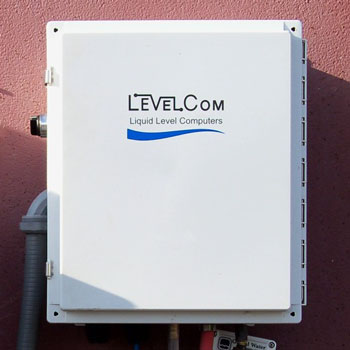
- Landfill leachate is a very corrosive liquid that decreases the service life of submersible sensors.
- Leachate levels must be continually measured and controlled to comply with Federal, State and local EHS regulations.
- Maximum level of leachate allowed in the bottom of the landfill sump is 18”. Accuracy is paramount and it is difficult to verify calibration of the sensor.
- Sensor calibration and replacement is expensive because it requires a full teardown of the well.
- Permanent records of leachate levels must be maintained.
CHALLENGE
Leachate well sumps contain a level sensor, pump and the well casing. Pumps are installed to eliminate accumulated leachate. The existing well gauging system is unreliable in that the calibration of the sensor is problematic and sensor life expectancy is 6-12 months. Sensor replacement involves a complete teardown of the well. Separate pump controls need to be purchased and installed for each well. The existing sensors only have an analog output providing limited data.
Additionally methane is generated by bacterial activity in the landfill cell. This gas is removed to prevent explosive conditions. Vacuum pumps recover this gas and there are varying degrees of vacuum in the sensing area in the bottom of the cell. With submersible sensors the vacuum generates offsets in the readings that are hard to account for.
SOLUTION
The LevelCom 400 uses plastic tubing installed in the leachate sump. Because all of the sensing electronics are mounted at the surface calibration is easily checked and no electronics are in contact with the leachate.
LevelCom 400’s are fitted with optional data loggers to record the level data. The LevelCom 400’s are connected to a system wide Modbus network, data can be viewed from an HMI in the main office.
The LevelCom 400 measure and compensates for well vacuum, increasing the accuracy of the level readings.
Optional control relays are used to control the pumps, eliminating the need for separate controls (PLC).
This installation has provided trouble-free operation for 4 years and counting. The optional data logger and control relays have provided full regulatory compliance with no data gaps and reliable pump control, thus avoiding any environmental spill issues.
